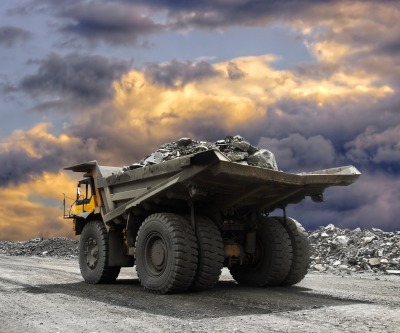Another day another iron ore price drop

The iron ore price pulled back once again on Tuesday as supply and demand fundamentals continue to cloud the outlook for the steelmaking raw material.
The 62% Fe benchmark import price including freight and insurance at the port of Tianjin tracked by The SteelIndex fell $0.50 or just under 1% to $62.80 a tonne on Tuesday, following a nearly 4% drop on Monday.
The price of the steelmaking raw material is trading at the lowest levels since early May 2009.
So far in 2015 the price has fallen 13.4% following a year in which the commodity nearly halved in value. Iron ore hit a peak above $190 a tonne in February 2011.
In a new note Caroline Bain of Capital Economics argues “a further increase in global iron ore supply this year and only subdued demand growth suggests iron ore prices will continue to drift lower.”
The independent research house expects prices to end 2015 at around $60 per tonne with risks to the downside.
That compares to consensus forecasts of a rise in prices to $75 per tonne by end-2015, a level Capital Economics believe will only occur at the end of next year as more higher-cost producers are forced out of the market.
While many high-cost producers in Canada, Africa and China have shuttered due to low prices, domestic Chinese production is proving stickier than previously thought.
The country’s miners produce some 350 million – 400 million tonnes a year on a 62% Fe-basis, although reliable stats are lacking (this figure is calculated working backwards from pig iron production).
Pressure on domestic Chinese iron ore miners which have successfully defended prices up to now is building particularly given estimates that around one-third of the many small mines struggling with low iron ore content (average close to 20%) have costs per tonne of more than $100.
But says Bain there won’t be a collapse in Chinese production because a large number of mines are owned by steel companies or are located very close to steel plants making mine closure at these vertically-integrated operations “a last resort.”
In addition “the desire to preserve employment and regional revenues in China’s provinces often helps to sustain loss-making industries for some time” and there is “considerable scope for consolidation and rationalization” which could help drive down costs.
Capital Economics is not alone in forecasting further weakness in the iron ore price.
Goldman Sachs released its estimates for iron ore on Friday. The investment bank cut its outlook for iron ore for this year to $66 a tonne this year, down substantially from an earlier estimate of $80.
Capital Economics is not even the most bearish forecaster – Citigroup believes iron ore will average $58 in 2015; another 10% drop from the today’s ruling price.
{{ commodity.name }}
{{ post.title }}
{{ post.date }}




Comments